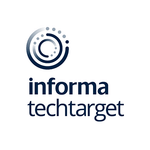Small Form Factor (SFF) SAS - Meeting the Demanding Requirements in Specific Markets
sponsored by Xtore
WHITE PAPER:
SAS technology has been proven to be the most versatile storage solution in data transfer and high performance. Read this white paper to learn about a solution that renders the necessary performance needed for your client's expanding market requirements.
Posted: 22 Aug 2007 | Published: 01 Aug 2007

|

|
|
Why Your Falling Lead Conversion Rates Are a Good Thing (And What to Measure Instead)
sponsored by Informa TechTarget
WHITE PAPER:
In this brief, explore how individual lead counts and conversion metrics can distract organizations from producing pipeline and revenue, and how buying-group-aware measures enabled by the Demand Unit Waterfall™ can provide a more meaningful evaluation of the health of the B2B revenue engine.
Posted: 08 Feb 2021 | Published: 29 May 2020

|

|
|
Atos Workplace Solutions and PCs with Intel vPro Technology
sponsored by Intel Corporation
WHITE PAPER:
Based on its evaluation of the virtualization capabilities in PCs with Intel® vPro™ technology, Atos Origin is planning to add this new technology to the next version of the Atos Workplace solution.
Posted: 02 Oct 2006 | Published: 01 Oct 2006

|

|
|
IT Tipping Point for Mid-sized Companies: Deciding When to Move to Tier 1 ERP
sponsored by Oracle Corporation
WHITE PAPER:
This white paper will focus on debunking the myth that Tier 1 systems make running the business more difficult, while demonstrating that Tier 1 systems can actually make it easier for growing mid-sized companies to do the things they need to do.
Posted: 04 May 2009 | Published: 04 May 2009

|

|
|
Optical Networks: Closing the Gap Between Patient and Caregiver
sponsored by AT&T Corp
WHITE PAPER:
In order to keep health care providers connected to their patients it's imperative to provide scalable, secure bandwidth. This white paper details optical network solutions that can do just that.
Posted: 08 Feb 2008 | Published: 01 Feb 2008

|

|
|
Best Practices in Data Management
sponsored by SAS
WHITE PAPER:
The key enterprise risk management (ERM) issue for many financial institutions is to get enriched data in a single place in order to report on it. Learn best practices for data management that are critical for ERM.
Posted: 06 Mar 2008 | Published: 01 Jan 2007

|

|
|
Placing a Lens on Supply Chain Planning
sponsored by IBM Line of Business
WHITE PAPER:
Sales and Operations Planning (S&OP) is becoming a necessity for
successful supply chain execution.
Posted: 29 Nov 2007 | Published: 01 Nov 2007

|

|
|
Total Economic Impact Of VMware Virtual Desktop Infrastructure - Healthcare Industry
sponsored by VMware, Inc.
WHITE PAPER:
Find out how a VMware healthcare customer used VMware View, formerly VMware Virtual Desktop Infrastructure, to reduce costs, free up office space and increase worker productivity in its remote offices.
Posted: 11 Dec 2008 | Published: 11 Dec 2008

|

|
|
Forget Speeds And Feeds - Outsourcing Today Is All About Your Business
sponsored by OneNeck IT
WHITE PAPER:
Enterprise Resource Planning has numerous deployment options that involve varying levels of company involvement, efficiency, completeness and cost. Read this white paper that details successful outsourcing models for ERP.
Posted: 24 Aug 2007 | Published: 01 Aug 2007

|

|
|
Delivering on the Promise of eLearning
sponsored by Adobe
WHITE PAPER:
This white paper considers some of the reasons that institutions and enterprises are turning to eLearning to engage learners with ideas and information. It also gives suggestions for creating digital learning experiences that engage learners.
Posted: 19 Jul 2007 | Published: 01 May 2007

|

|